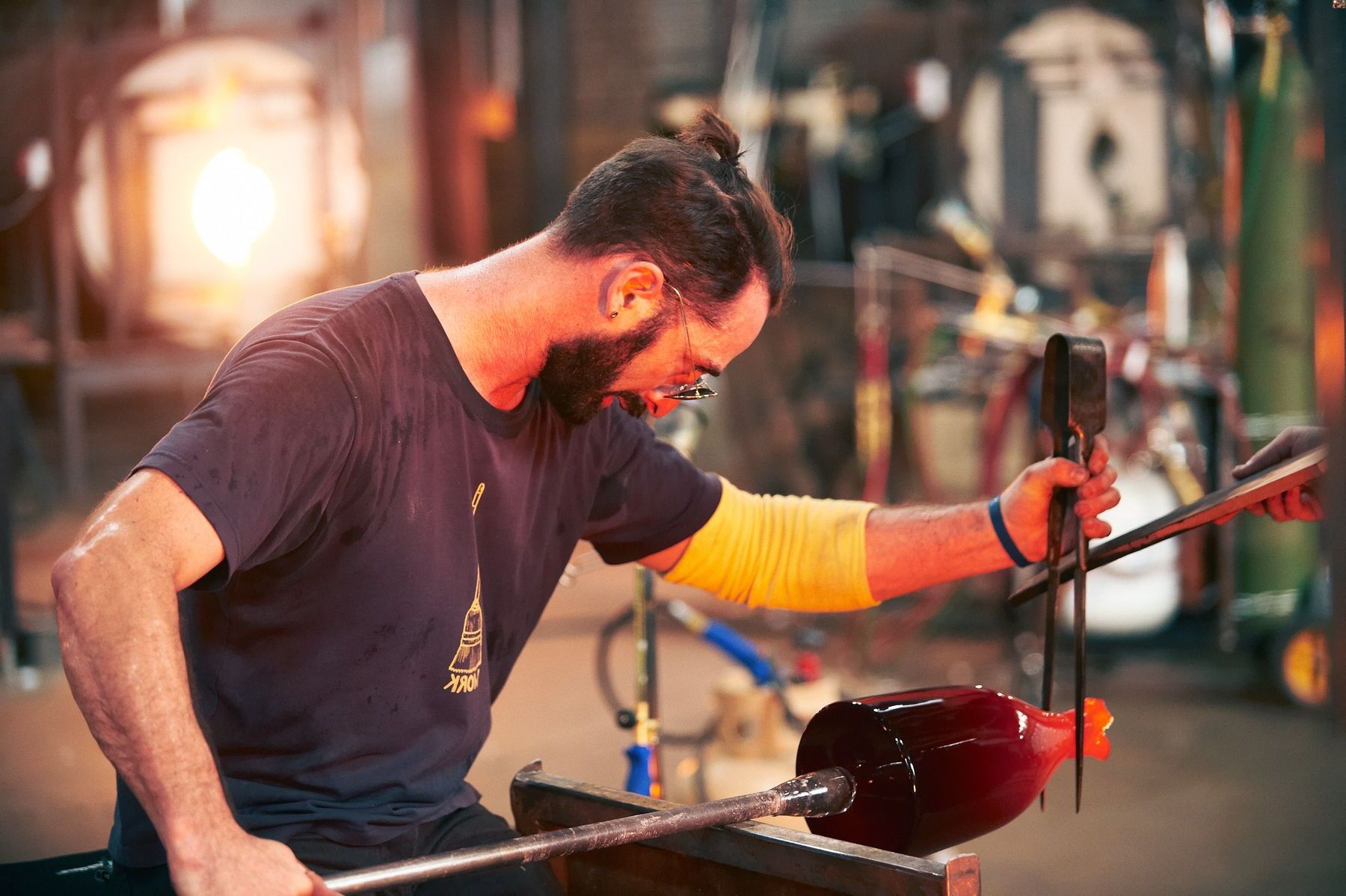
Glassblowing is an ancient art form that has fascinated people for centuries. But what exactly makes it so special? Glassblowers use their breath, tools, and intense heat to shape molten glass into beautiful, intricate designs. This craft requires a mix of creativity, precision, and patience. Did you know that the origins of glassblowing date back to the 1st century BC? Or that the process involves heating glass to over 2,000 degrees Fahrenheit? From creating delicate ornaments to massive sculptures, glassblowers transform raw materials into stunning works of art. Let's dive into 20 intriguing facts about this mesmerizing craft and the talented artisans behind it.
The Art of Glassblowing
Glassblowing is an ancient craft that has fascinated people for centuries. This intricate art form involves shaping molten glass into beautiful objects. Here are some intriguing facts about glassblowing that will give you a deeper appreciation for this skill.
-
Glassblowing dates back to the 1st century BC. The earliest evidence of glassblowing was found in Syria, where artisans first developed the technique.
-
The process involves heating glass to around 2,100 degrees Fahrenheit. At this temperature, glass becomes molten and can be shaped using a blowpipe.
-
A blowpipe is a long metal tube used to inflate molten glass into a bubble. This bubble can then be shaped into various forms.
-
Glassblowers use a variety of tools to shape and cut the glass. These include shears, tweezers, and paddles.
Famous Glassblowing Techniques
Different techniques have evolved over the centuries, each adding unique characteristics to the glass pieces. Here are some of the most renowned methods.
-
The Venetian technique is known for its intricate designs and vibrant colors. Venetian glassblowers are considered some of the best in the world.
-
Lampworking involves using a small torch to melt and shape glass. This technique is often used to create detailed beads and small sculptures.
-
Fusing and slumping involve layering pieces of glass and heating them until they fuse together. This method is commonly used to create glass tiles and plates.
-
Sandblasting is a technique where sand is blasted at high pressure onto the glass surface. This creates a frosted or etched appearance.
The Science Behind Glassblowing
Understanding the science behind glassblowing can make the art even more fascinating. Here are some scientific facts related to this craft.
-
Glass is made primarily of silica, which is found in sand. When heated, silica melts and becomes malleable.
-
The annealing process is crucial in glassblowing. After shaping, glass must be slowly cooled in an annealing oven to relieve internal stresses and prevent cracking.
-
Different metals and minerals can be added to molten glass to create various colors. For example, adding cobalt produces blue glass, while adding gold creates a red hue.
-
Glassblowing requires precise temperature control. Even a small variation can affect the final product's quality and appearance.
Glassblowing in Modern Times
Glassblowing has evolved, but it remains a popular and respected art form. Here are some modern aspects of glassblowing.
-
Many contemporary artists use glassblowing to create stunning sculptures and installations. Dale Chihuly is one of the most famous modern glass artists.
-
Glassblowing studios and schools have popped up worldwide, allowing more people to learn this ancient craft.
-
The craft has also found its way into popular culture. Shows like "Blown Away" on Netflix have brought glassblowing into the spotlight.
-
Glassblowing is not just for art; it's also used in scientific research. Glassblowers create specialized glassware for laboratories.
Fun Facts About Glassblowing
Here are some lighter, fun facts about glassblowing that you might find interesting.
-
Glassblowing is a physically demanding job. It requires strength, precision, and the ability to work in high temperatures.
-
The term "glassblower's disease" refers to a condition where glassblowers develop lung issues from inhaling fine glass particles. Modern safety measures have reduced this risk.
-
Some glassblowers can create incredibly detailed and tiny sculptures. These miniature works of art are often no larger than a coin.
-
Glassblowing has its own unique terminology. For example, "gathering" refers to collecting molten glass on the end of a blowpipe, and "marvering" means rolling the glass on a flat surface to shape it.
The Magic of Glassblowing
Glassblowing is a fascinating blend of art and science. From ancient origins to modern innovations, this craft has evolved while retaining its mesmerizing charm. Glassblowers transform molten glass into stunning pieces, using skills passed down through generations. The process involves intense heat, precise timing, and a keen eye for detail.
Understanding the history and techniques of glassblowing deepens appreciation for each unique creation. Whether it's delicate ornaments or intricate sculptures, every piece tells a story of creativity and craftsmanship. Visiting a glassblowing studio or watching a demonstration can be an eye-opening experience, revealing the dedication and passion behind this timeless art form.
Next time you see a beautiful glass object, remember the skill and effort that went into making it. Glassblowing isn't just about creating objects; it's about preserving a tradition that continues to inspire and captivate.
Was this page helpful?
Our commitment to delivering trustworthy and engaging content is at the heart of what we do. Each fact on our site is contributed by real users like you, bringing a wealth of diverse insights and information. To ensure the highest standards of accuracy and reliability, our dedicated editors meticulously review each submission. This process guarantees that the facts we share are not only fascinating but also credible. Trust in our commitment to quality and authenticity as you explore and learn with us.


